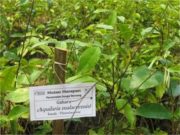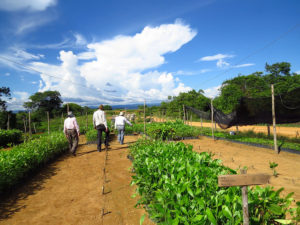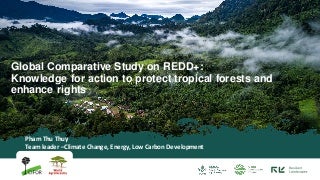
As the world leaders gather in Bonn for the UN climate summit, a new study shows that forest restoration needs a mindset change to reach its potential in mitigating climate change.
All forest and landscape restoration projects require access to land and seed. International agreements and guidelines now broadly recognize the need to consider both the biophysical and political dimensions of land during restoration planning, from erosion control to tenure issues.
By contrast, the quality, availability of, and access to tree seed has received little attention in high-level policy and planning. And yet, restoring just a million hectares of degraded forest land – a fraction of recent unprecedented global restoration commitments – can easily require a billion seedlings.
What these seedlings are, where they come from, how they are selected, produced and delivered and by whom, are neither trivial nor merely technical issues for forest and landscape restoration to be effective and provide expected benefits, including for climate.
A new study that surveyed restoration projects from more than 50 countries shows that most projects struggle in selecting and accessing suitable tree seed for meeting their objectives. For example, half of the projects did not have any seed selection criteria to ensure that seed is viable and adequately diverse – and yet, four of five projects often could not find what they were looking for in seed markets.
Lack of genetic diversity or unsuitable origin of seed has profound impacts on restoration success, reducing seedling growth and survival, productivity, resistance to pests and diseases, and capacity to adapt to environmental change. Survey respondents described the practical implications for their projects: 47% of them had often experienced higher costs, 41% delays and 35% ended up restoring the same site again because of problems with planting material. Carbon credits quickly pick up cost.
Read more: FTA at COP23

Alarmingly, the projects that specifically aim at mitigating climate change are often the ones giving least attention to what they plant, and, therefore, at highest risk of failure.
Additional bad news for mitigation targets is that restoration practitioners often strongly prefer ‘local’ seed, typically sourced from within a few kilometers from the restoration site. They commonly assume that such seed sources are best adapted to the site conditions – a view that has little support from research, especially in light of changing climate.
Moreover, in target landscapes for restoration, remaining forests are often degraded and likely producing inbred seed with poor growth and survival. It would be prudent to expand the area within which seed is sourced, emphasizing the genetic viability of seed sources rather than arbitrary cut-off distances from the restoration site.
What can countries do to reduce the rates of failure and help make forest and landscape restoration climate-smart?
“Unfortunately, there are no quick fixes: trees typically take several years, in some cases up to decades, to start to produce seed”, says Riina Jalonen, the study’s lead author and Associate Scientist at Bioversity International. “Therefore, seed supply for tomorrow’s restoration needs really has to be planned today”.
“Countries should initiate national assessments of seed supply and demand for meeting restoration targets as a priority. If seed needs are assessed only at project level, the gaps in supply continue to go unnoticed and can’t be dealt with effectively,” Jalonen says.
Currently, growing restoration pledges worldwide are not accompanied by growing commitments to developing and protecting seed sources. That spells increasing trouble for restoration practitioners in the years ahead. Can we change the tide?
Read more: Gender Research Fellowship’s second round kicks off in Kenya
Originally published on the website of Bioversity International.
This research is part of the CGIAR Research Program on Forests, Trees and Agroforestry and is supported by CGIAR Fund Donors.











